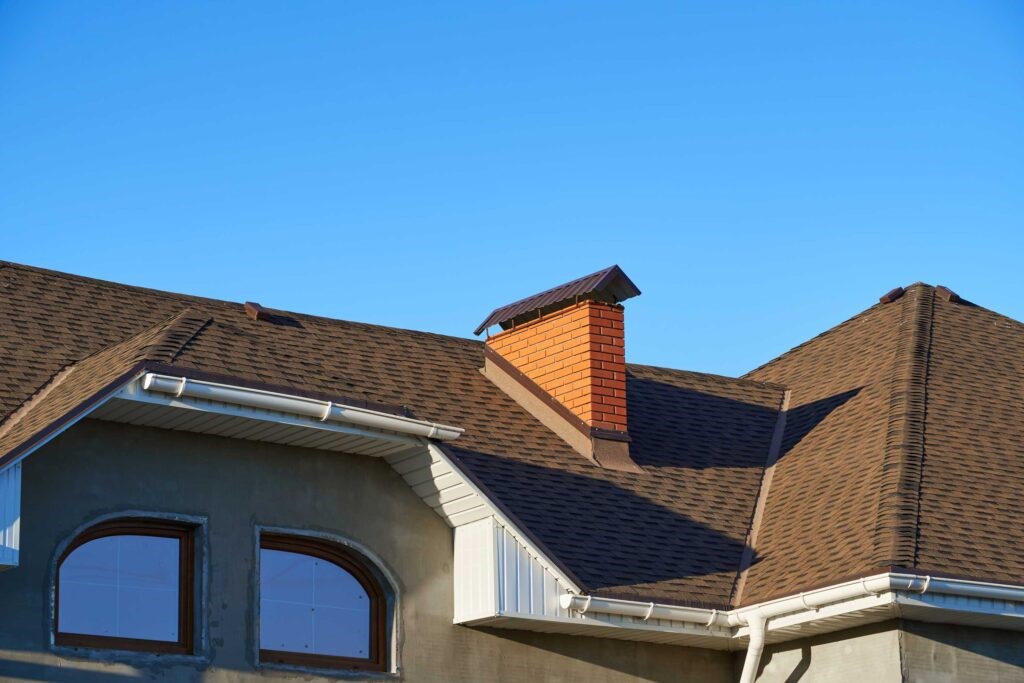Roof flashing is a crucial component in protecting your home from water damage. At Complete Roofing Systems, we believe that understanding the roof flashing basics can help you appreciate its role in maintaining the integrity of your roofing system. This guide will cover everything you need to know about flashing, including the importance of roofing flashing and the different types of roofing flashing available.

Roof Flashing Basics
Roof flashing is a thin metal material installed to direct water away from critical areas of the roof where it meets walls, valleys, chimneys, and other intersections. The primary purpose of flashing is to prevent water from seeping into the roof and causing damage to the structure of your home. Even a well-installed roof can be vulnerable to leaks and water damage without proper flashing.
Flashing can be made from various materials, including aluminum, copper, stainless steel, and galvanized steel. Each material has its own advantages and is chosen based on the project’s specific needs and budget. The installation process involves securing the flashing in place and sealing it with roofing cement or sealant to create a watertight barrier.
Importance of Roof Flashing
The importance of roof flashing cannot be overstated, as it serves several critical functions to protect your home from water damage. Flashing is the first line of defense against leaks. By directing water away from vulnerable areas it prevents water from seeping into the roof structure and causing rot, mold, and other issues. Properly installed flashing enhances the durability of your roof. It helps withstand the elements, including heavy rain, snow, and wind, which can otherwise compromise the roof’s integrity. Investing in quality flashing can save you money in the long run by preventing costly repairs. Water damage can lead to significant expenses, including replacing insulation, drywall, and even structural components. Effective flashing also contributes to the energy efficiency of your home. By keeping water out, it prevents insulation from becoming wet and losing its effectiveness, which helps maintain a comfortable indoor temperature.
Types of Roof Flashing
There are several types of roof flashing, each designed for specific areas and functions on the roof:
1. Step Flashing
Step flashing is used where the roof meets a vertical surface, such as a wall or chimney. It consists of multiple pieces of flashing that overlap each other in a step-like pattern. This design ensures that water is directed away from the roof and down the side of the vertical surface.
2. Valley Flashing
Valley flashing is installed in the valleys where two roof slopes meet. This area is particularly prone to water accumulation and requires robust protection. Valley flashing is typically a continuous piece of metal that extends the length of the valley, ensuring water flows smoothly down and off the roof.
3. Drip Edge Flashing
Drip edge flashing is installed along the edges of the roof to guide water away from the fascia and into the gutters. It helps prevent water from seeping under the roofing material and causing damage to the roof deck and fascia boards.
4. Chimney Flashing
Chimney flashing is specifically designed to seal the area around the chimney. It usually consists of two parts: base flashing and counter flashing. The base flashing is installed at the roof level, and the counter flashing is embedded into the chimney masonry to cover and protect the base flashing.
5. Vent Pipe Flashing
Vent pipe flashing is used to seal the area around roof penetrations, such as plumbing vents and exhaust pipes. It typically includes a rubber boot that fits snugly around the pipe and a metal base that is integrated into the roofing material to ensure a watertight seal.
Proper Installation and Maintenance
Proper installation and maintenance of roof flashing are essential for its effectiveness. To ensure your flashing performs well, it’s best to hire professional roofing contractors rather than attempting DIY installations or repairs. Proper installation requires expertise and experience to ensure a watertight seal. Additionally, scheduling regular roof inspections to check the condition of the flashing is crucial. Look for signs of damage, such as cracks, rust, or loose pieces, as early detection can prevent more significant problems down the line. If you notice any damage or wear, address it promptly, as small repairs can prevent water from penetrating the roof and causing extensive damage. Finally, invest in high-quality flashing materials that are appropriate for your specific roof type and climate conditions. Quality materials will last longer and provide better protection.
How Complete Roofing Systems Can Help
At Complete Roofing Systems, we specialize in all aspects of roofing, including roof flashing installation and maintenance. Our team of skilled professionals understands the importance of roof flashing and is dedicated to ensuring that your roof remains leak-free and durable. We use only the best materials and techniques to provide long-lasting protection for your home.
Whether you need new flashing installed, repairs to existing flashing or a comprehensive roof inspection, Complete Roofing Systems is here to help. Contact us today to learn more about our services and how we can assist you in maintaining a secure and efficient roofing system.
Subscribe to Complete Roofing Systems's Blog




Comments